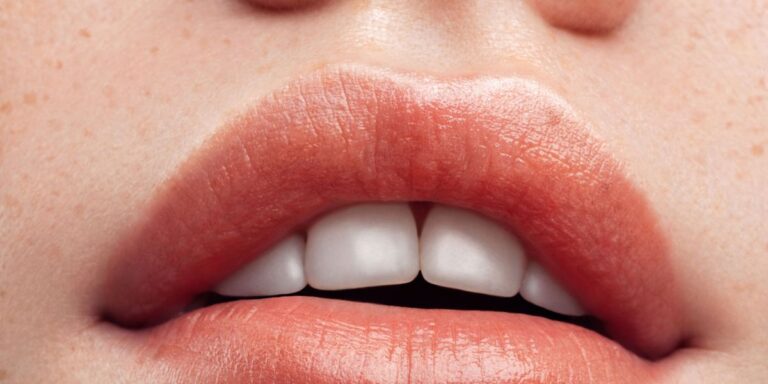Every night, I like to spend at least an hour scrolling through TikTok, turning my brain into a glob of gooey mush. Normally, since the majority of my feed is beauty-related, I tolerate this behavior and dismiss it as “work.” The latest video that made me stop doom-scrolling was a TikTok of a girl putting nipple cream on her lips. From there, I watched countless videos reporting that it was just as good (and cheap!) as Laneige’s Lip Sleeping Mask, one of my beauty essentials. This isn’t just a TikTok trend: French women have been using Homeoplasmin, a nipple cream you can find in French pharmacies (and now on Amazon!), to soothe their dry lips for years.
For those whose lips are severely chapped due to the weather or medications like Accutane, nipple cream could be a lifesaver. But before you storm into your local drugstore and head to the baby section, we asked a cosmetic chemist and a dermatologist about the trend and whether it’s safe to apply nipple cream to your lips instead of a traditional lip mask. Keep reading to find out if this chapped-lip hack is right for you.
What is nipple cream usually made from?
Nipple creams were originally created to prevent and protect against the chafing, irritation, and cracking that often occurs during breastfeeding, and cosmetic chemists say they often contain occlusive ingredients like petroleum, paraffin, mineral oil, beeswax, and lanolin. Charlene Valledor. The main ingredient in these creams is lanolin, which acts as an emollient and helps soften and soothe the skin, says a New York dermatologist. Dr. Marisa Gershick“Nipple creams may also contain ingredients such as occlusive agents that act as a barrier to seal in moisture and protect the skin,” she says. In more severe cases, some people may need prescription nipple creams that contain topical steroids and antifungal ingredients.
Is it safe to use on lips?
“Depending on the formulation, nipple creams can be used on the lips, but certain textures may not be suitable for this area,” says Valledor. Nipple creams have been proven to be moisturizing, but they are meant to be used on nipples, not lips, so be sure to check the ingredients. “Unless specifically instructed, you probably shouldn’t use nipple creams that contain steroids or antifungal ingredients on your lips,” warns Dr. Garshick.
Plus, with so many different nipple creams on the market, it’s hard to say they’re absolutely good for your lips. One of the most popular brands is made with 100% lanolin, which can cause allergic contact dermatitis and lead to dry lips, redness, and sensitivity. “There are countless formulations of nipple creams, so it’s best to evaluate the ingredients and do a patch test before applying them to your lips,” says Valledor.
What to do if your lips are extremely dry?
For extremely dry lips, Dr. Garsick recommends a thick, petrolatum-based ointment that helps seal in moisture. “It’s best to avoid common irritants and allergens like fragrances, menthol, eucalyptus, and lanolin,” says Dr. Garsick.
“My favorite ointment to apply to extremely dry, cracked lips is Aquaphor, which forms an effective semi-occlusive barrier and, unlike pure petroleum, allows oxygen through, which can support and even speed up the healing process,” says Valledor.
Other tips include staying adequately hydrated and sleeping with a humidifier during colder months when the heating is on. If your lips are chronically dry and cracked for weeks on end, it may be best to see a doctor to rule out other factors that could be causing your dry lips.
What are the best ingredients for extremely dry lips?
“For extremely dry lips, moisturizers like petrolatum, which acts as an occlusive agent to lock in moisture, and hyaluronic acid, which attracts moisture, are effective,” says Dr. Garshick. Shea butter is also a good option, as it acts as an emollient to soften and soothe lips.
“You want to create a breathable layer to protect dry lips and avoid further irritation from ingredients like fragrance and menthol, which may feel good at first but can also cause further dryness and irritation,” explains Valledor.







